Motorized Hurricane Screen
Why Maxforce

MAXFORCE PROVEN PROTECT
Engineered For Excellence
For nearly two decades, MaxForce has manufactured hurricane screens to meet the most demanding building code, the High Velocity Hurricane Zone of Miami-Dade. The MaxForce track is our newest version of the fixed track we have used with great success for high wind applications all over the globe.
The benefits of a fixed track are unmatched strength - this is important when designing a screen system for hurricanes. When you want the strongest system available, and a proven veteran of many hurricanes, the MaxForce Hurricane Track is your best choice.
MAXFORCE THE #1 MOTORIZED HURRICANE SCREEN
Contact A+ Certified MaxForce Screen Dealer Today...
MAXFORCE HURRICANE SCREENS
Engineering Features

No blowouts. No rewraps. No frustration.
MaxForce is the only retractable screen system on the market designed to stay locked in the track—even in high winds. Smart motor senses resistance and adjusts seamlessly, allowing self-correction when the screen encounters an obstacle: Fewer snags, fewer jams, and fewer costly service calls.
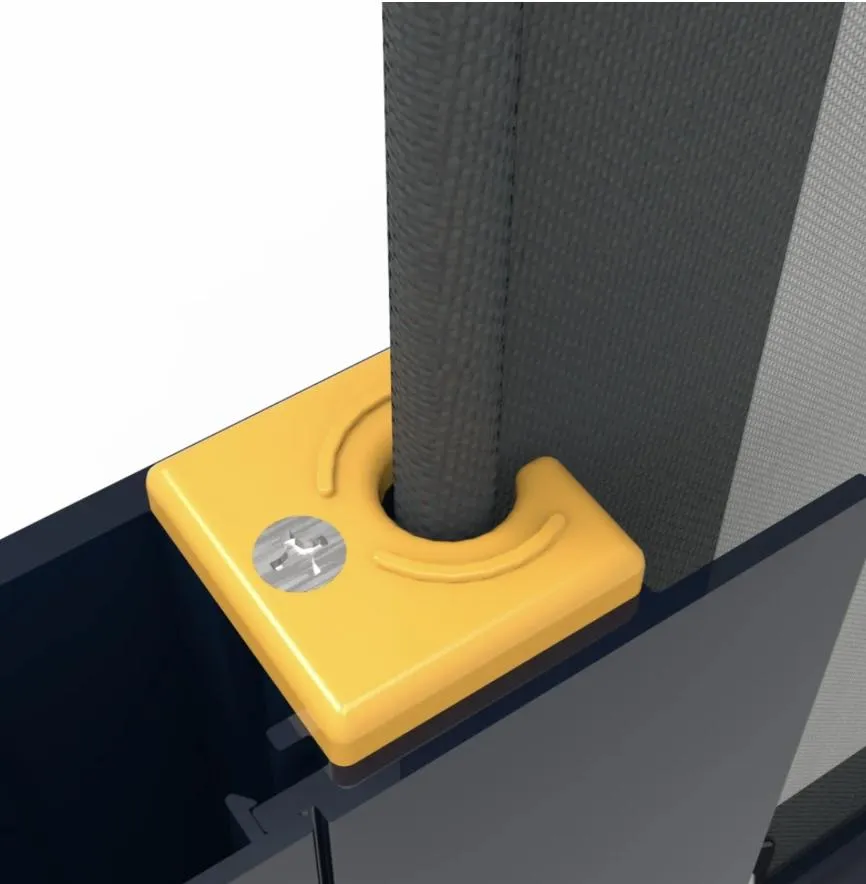
No Zipper. No Cable. Just Simple Deployment
MaxForce pioneered Keder-edge technology in motorized screens, delivering unmatched durability and simplicity. Borrowed from sailboat rigging, this system eliminates zippers, cables, and exposed hardware—ensuring smooth, reliable operation every time.
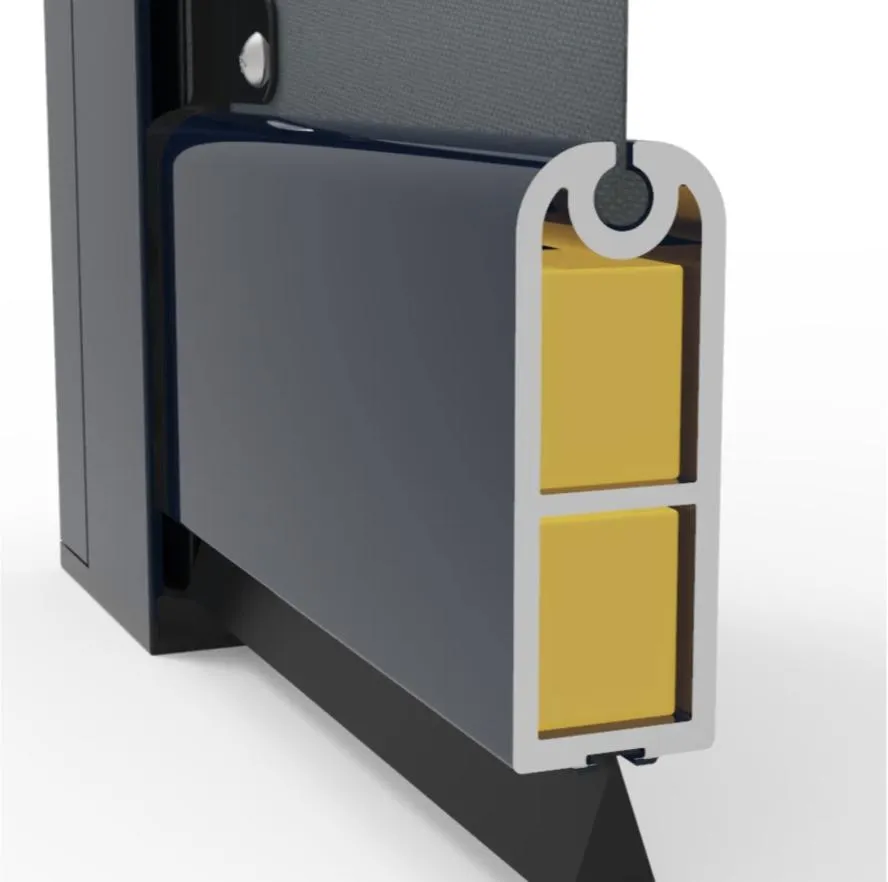
Heavy Duty
The MaxForce weight bar is engineered for strength—and built to hold its ground. Pound for pound, it’s the heaviest and most robust weight bar in the industry. This ensures proper screen tension, flawless deployment, and maximum stability in high wind zones. —limited flex, no failure.
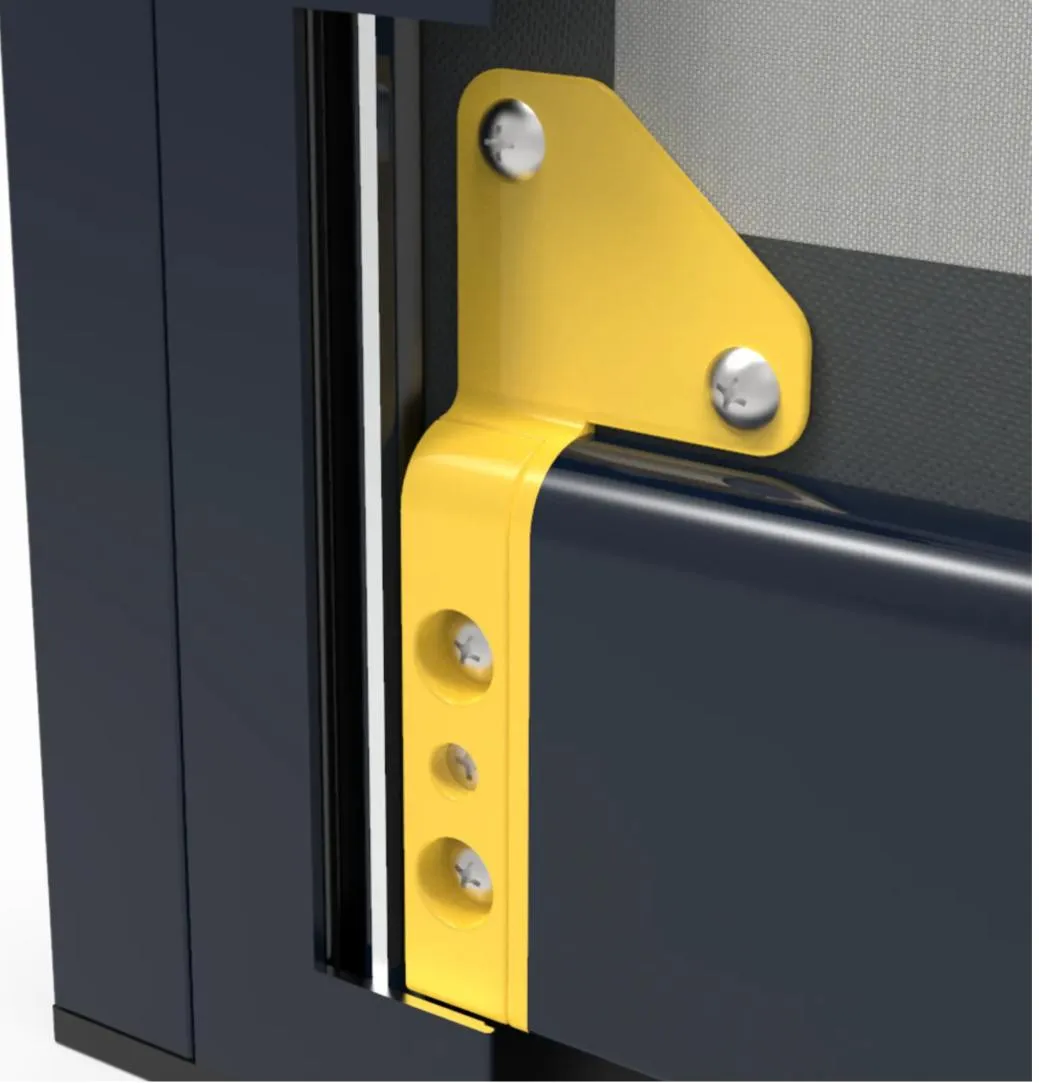
Reinforced Corners
MaxForce’s heavy-duty weight bar isn’t just strong. It’s smart. Reinforced corners and integrated tie-ins create a unified structure that acts like a solid wall of protection when deployed. Made from high-strength nylon, this bar absorbs impacts while maintaining structural integrity.
Motorized Hurricane Screen
Why Maxforce

MAXFORCE PROVEN PROTECT
Engineered For Excellence

For nearly two decades, MaxForce has manufactured hurricane screens to meet the most demanding building code, the High Velocity Hurricane Zone of Miami-Dade. The MaxForce track is our newest version of the fixed track we have used with great success for high wind applications all over the globe.
The benefits of a fixed track are unmatched strength - this is important when designing a screen system for hurricanes. When you want the strongest system available, and a proven veteran of many hurricanes, the MaxForce Hurricane Track is your best choice.
MAXFORCE THE #1 MOTORIZED
HURRICANE SCREEN
Contact A+ Certified MaxForce Screen
Dealer Today...
MAXFORCE HURRICANE SCREENS
Engineering Features

No blowouts. No rewraps.
No frustration.
MaxForce is the only retractable screen system on the market designed to stay locked in the track—even in high winds. Smart motor senses resistance and adjusts seamlessly, allowing self-correction when the screen encounters an obstacle: Fewer snags, fewer jams, and fewer costly service calls.

No Zipper. No Cable.
Just Simple Deployment
MaxForce pioneered Keder-edge technology in motorized screens, delivering unmatched durability and simplicity. Borrowed from sailboat rigging, this system eliminates zippers, cables, and exposed hardware—ensuring smooth, reliable operation every time.

Heavy Duty
The MaxForce weight bar is engineered for strength—and built to hold its ground. Pound for pound, it’s the heaviest and most robust weight bar in the industry. This ensures proper screen tension, flawless deployment, and maximum stability in high wind zones. —limited flex, no failure.

Reinforced Corners
MaxForce’s heavy-duty weight bar isn’t just strong. It’s smart. Reinforced corners and integrated tie-ins create a unified structure that acts like a solid wall of protection when deployed. Made from high-strength nylon, this bar absorbs impacts while maintaining structural integrity.

HEADACHE-FREE
Exclusive self-tensioning system eliminates 99.9% of screen issues. No track adjustments, broken zippers, or dislodged screens.

LIFETIME WARRANTY
Exterior shade screens reduce cooling bills and MaxForce hurricane screens reduce insurance premiums in hurricane zones.

HURRICANE STRONG
Our MaxForce tracks and advanced hybrid ballistic fabrics withstand 150+ mph winds. Approved by Florida Building Commission for hurricane zones. Lab and real-world tested.
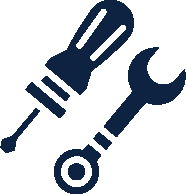
BUILT TO LAST
We use marine-grade materials such as powder-coated aluminum, UV-protected nylons, stainless steel fasteners, and premium fabrics. Resists corrosion, rust, and screen failure.

COST-SAVING
Exterior shade screens reduce cooling bills and MaxForce hurricane screens reduce insurance premiums in hurricane zones.

SMART CONTROLS
Control MaxForce screens via remote and
phone or integrate with popular home automation systems for advanced
capabilities.

SECURE TRACK
MaxForce Fix Hurricane Track holds firm under extreme loads

MAX CORROSION PROTECTION
Powder Coated Aluminum Protects your investment from exposer and corrosion.

HEAVY-DUTY DESIGN
Our screens are designed to withstand the extreme. High wind, Rain, or Shine, Dust Dirt, Dander, it doesn't matter. MaxForce Cover it all.

CUSTOM-MADE SCREENS
Tailor-made screens with vast color, fabric, and system options. Custom paint color and fabric matching are available.
MAXFORCE THE #1 MOTORIZED HURRICANE SCREEN
Contact A+ Certified MaxForce Screen Dealer Today...

HEADACHE-FREE
Exclusive self-tensioning system eliminates 99.9% of screen issues.
No track adjustments, broken zippers,
or dislodged screens.

LIFETIME WARRANTY
Exterior shade screens reduce cooling
bills and MaxForce hurricane screens
reduce insurance premiums in
hurricane zones.

HURRICANE STRONG
Our MaxForce tracks and advanced hybrid ballistic fabrics withstand
150+ mph winds. Approved by Florida Building Commission for hurricane
zones. Lab and real-world tested.

BUILT TO LAST
We use marine-grade materials such
as powder-coated aluminum, UV-protected nylons, stainless steel
fasteners, and premium fabrics. Resists corrosion, rust, and screen failure.

COST-SAVING
Exterior shade screens reduce cooling
bills and MaxForce hurricane screens
reduce insurance premiums in
hurricane zones.

SMART CONTROLS
Control MaxForce screens via remote and
phone or integrate with popular home automation systems for advanced
capabilities.

SECURE TRACK
MaxForce Fix Hurricane Track holds firm under extreme loads

MAX CORROSION PROTECTION
Powder Coated Aluminum Protects your investment from exposer and corrosion.

HEAVY-DUTY DESIGN
Our screens are designed to withstand
the extreme. High wind, Rain, or Shine,
Dust Dirt, Dander, it doesn't matter. MaxForce Cover it all.

CUSTOM-MADE SCREENS
Tailor-made screens with vast color, fabric, and system options. Custom
paint color and fabric matching are available.
MAXFORCE THE #1 MOTORIZED
HURRICANE SCREEN
Contact A+ Certified MaxForce Screen
Dealer Today...
MAXFORCE
Ready For Life's Storms

MAXFORCE HURRICANE SCREEN SYSTEM
A Certified, Tested System...
The MaxForce Hurricane Screen System meets or exceeds Miami-Dade and Florida Building Code requirements—the toughest hurricane codes on earth—for roll-down hurricane screens. Rated for the 185 MPH wind zone, and with real-world and certified testing. With spans of up to 25 feet, they exceed performance criteria for all local and International Building Codes.
MAXFORCE THE #1 MOTORIZED HURRICANE SCREEN
Contact A+ Certified MaxForce Screen Dealer Today...
MAXFORCE
Ready For Life's Storms

MAXFORCE HURRICANE SCREEN SYSTEM
A Certified, Tested System...
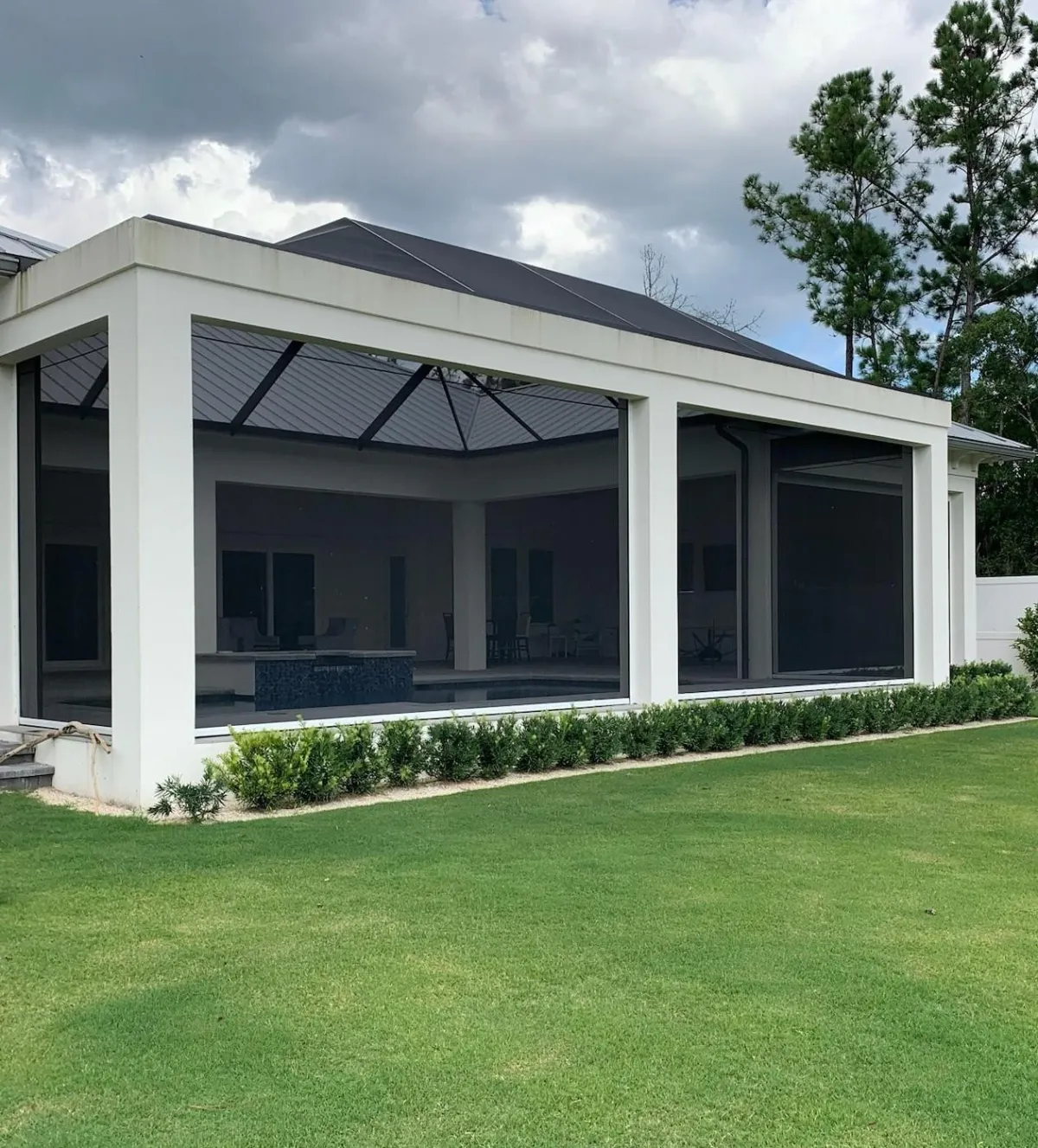
The MaxForce Hurricane Screen System meets or exceeds Miami-Dade and Florida Building Code requirements—the toughest hurricane codes on earth—for roll-down hurricane screens. Rated for the 185 MPH wind zone, and with real-world and certified testing. With spans of up to 25 feet, they exceed performance criteria for all local and International Building Codes.
MAXFORCE THE #1 MOTORIZED
HURRICANE SCREEN
Contact A+ Certified MaxForce Screen
Dealer Today...
THE MAXFORCE DIFFERENCE
Maxforce Hurricane Screen
THE MAXFORCE DIFFERENCE
MaxForce Hurricane Screen
MaxForce Hurricane Screens, powered by our MaxForce system, meet the toughest standards—including HVHZ certification in Miami-Dade and Broward. They last longer, resist more, and do more than any screen on the market—proven protection without compromise.
MaxForce Hurricane Screens —Delivers 365 days of perfect protection, rain or shine, on your patio and lanai. With the push of a button or a tap on the mobile app, your patio is storm-ready— furniture and openings fully protected in seconds.
MaxForce Hurricane Screens fabric blocks up to 95% of the sun’s damaging UV-rays while shielding against wind, rain, insects, dust, and debris. It also helps reduce heat and lower energy costs by limiting solar exposure—comfort and protection in one smart solution.
Like all Fenetex products, our MaxForce Hurricane Screens are highly customizable and built to order—made to fit your exact openings. No guesswork, no compromises—just precision-fit protection tailored to your space.
Pair our retractable MaxForce Hurricane Screens with other Fenetex screens for customized and independent solutions. Each screen operates independently, giving you the protection you want when you need it.
MaxForce Hurricane Screens offer built-in privacy without blocking your view. Like a two-way mirror, you can see out—but neighbors and passersby can not see in. It provides the perfect blend of openness and seclusion, day or night.
MAXFORCE THE #1 MOTORIZED HURRICANE SCREEN
Contact A+ Certified MaxForce Screen Dealer Today...
INTEGRITY MATTERS
How MaxForce Is Made Matters
MaxForce Hurricane Screens, powered by our MaxForce system, meet the toughest standards—including HVHZ certification in Miami-Dade and Broward. They last longer, resist more, and do more than any screen on the market—proven protection without compromise.
.
MaxForce Hurricane Screens —Delivers 365 days of perfect protection, rain or shine, on your patio and lanai. With the push of a button or a tap on the mobile app, your patio is storm-ready— furniture and openings fully protected in seconds.
MaxForce Hurricane Screens fabric blocks up to 95% of the sun’s damaging UV-rays while shielding against wind, rain, insects, dust, and debris. It also helps reduce heat and lower energy costs by limiting solar exposure—comfort and protection in one smart solution.
.
Like all Fenetex products, our MaxForce Hurricane Screens are highly customizable and built to order—made to fit your exact openings. No guesswork, no compromises—just precision-fit protection tailored to your space.
.
Pair our retractable MaxForce Hurricane Screens with other Fenetex screens for customized and independent solutions. Each screen operates independently, giving you the protection you want when you need it.
.
MaxForce Hurricane Screens offer built-in privacy without blocking your view. Like a two-way mirror, you can see out—but neighbors and passersby can not see in. It provides the perfect blend of openness and seclusion, day or night.
.
MAXFORCE THE #1 MOTORIZED
HURRICANE SCREEN
Contact A+ Certified MaxForce Screen
Dealer Today...
INTEGRITY MATTERS
How MaxForce Is
Made Matters
AMERICAN INGENUITY
Made in the USA.
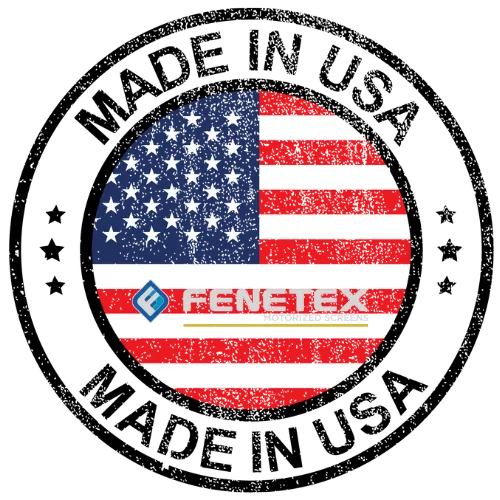
Proudly Made in the USA—every MaxForce screen is built with American strength, precision, and pride. From the smallest components to the final assembly, our materials are sourced and manufactured right here in the United States. No outsourcing. No compromises. Just hardworking Americans protecting American homes with the toughest screen system on the market.
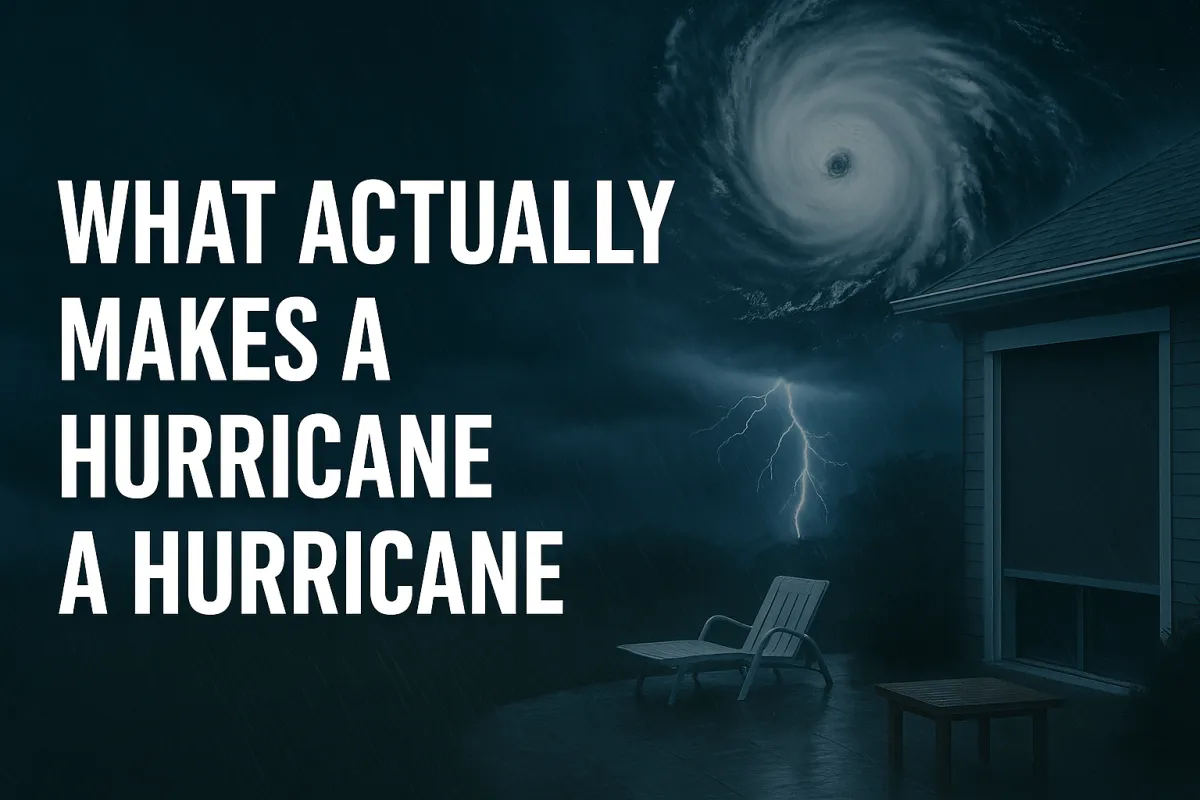
What Makes a Hurricane:
What Actually Makes a Hurricane a Hurricane
The ocean breathes.
Warm water rises into cooler air. Moisture condenses. Energy releases. And somewhere over tropical waters, the atmosphere begins to spin.
Most of the time, nothing comes of it. A cluster of thunderstorms. A tropical wave that drifts west and dies. But sometimes—under the right conditions, in the right place, at the right moment—something else happens.
The spin tightens. The pressure drops. The winds organize themselves into bands that spiral inward, feeding on warmth and moisture like fuel. What started as scattered storms becomes something unified. Something with structure. Something with purpose.
A hurricane is born.
More Than Just Wind
Ask most people what makes a hurricane dangerous, and they'll tell you about the wind. And they're not wrong—sustained winds of 74 miles per hour or higher can tear roofs from homes, snap power lines, and turn everyday objects into projectiles. But wind is only part of the story.
A hurricane is a heat engine. It pulls energy from warm ocean water and converts it into motion—spinning faster, growing stronger, feeding on itself as long as conditions allow. The warmer the water, the more fuel it has. The less wind shear in the atmosphere, the better it can organize. Given enough time and the right environment, a hurricane can become one of nature's most powerful forces.
But here's what makes them truly dangerous: they're not just wind machines. They're water machines too.
The Anatomy of Destruction
Every hurricane has the same basic structure. At its center sits the eye—a calm, clear column where winds drop and skies open. It's an eerie place, deceptively peaceful, surrounded by the eyewall where the storm's strongest winds rage.
Beyond the eyewall, rainbands spiral outward for hundreds of miles. These aren't gentle showers. They're training bands of intense rainfall, sometimes producing their own tornadoes, dumping water faster than the ground can absorb it.
And beneath it all, the storm pushes against the ocean itself. Wind-driven waves pile up against the coast. Water has nowhere to go but inland. This is storm surge—the deadliest part of any hurricane. Not the wind. The water.
According to the National Hurricane Center, hurricanes form when several critical ingredients come together: warm ocean water at least 80°F (26.5°C), moist air, low wind shear, and a pre-existing weather disturbance. NOAA research shows that these storms pull heat energy from tropical waters, converting it into the massive power that can equal half the electrical generating capacity of the entire world during a single storm.
Why the Categories Matter
The Saffir-Simpson Hurricane Wind Scale divides hurricanes into five categories based on maximum sustained wind speed. Developed in 1971 by civil engineer Herbert Saffir and meteorologist Robert Simpson, the scale provides a framework for understanding storm intensity. Category 1 starts at 74 mph. Category 5 begins at 157 mph and has no upper limit.
But these categories aren't just numbers on a chart. They're thresholds of damage. Markers that separate inconvenience from danger, danger from devastation, devastation from catastrophe.
A Category 1 storm will snap tree branches and damage roof shingles. A Category 5 will level entire neighborhoods and make areas uninhabitable for months.
It's worth noting that the scale has limitations. According to the National Park Service, the tragic example of Hurricane Ike in 2008 illustrates this well—the storm weakened to Category 2 based on wind speed as it approached Texas, leading some residents to stay home. But Ike produced storm surge typical of a Category 4 or 5 hurricane, resulting in 112 deaths. This is why understanding what each category means—and recognizing that storm surge and flooding often pose greater threats than wind—becomes crucial for survival.
Understanding these categories—really understanding what each one means for your home, your family, your community—is the difference between preparing adequately and learning hard lessons you can't afford to learn.
What This Series Will Cover
Over the next several posts, we're going to walk through each hurricane category in detail. Not just the wind speeds, but what those speeds actually do. What damage looks like at each level. What protection you need. What mistakes people make.
We'll start with Category 1—the storms people too often underestimate—and work our way up through the scale. Then we'll go beyond the categories themselves to talk about the dangers that wind speed doesn't capture: storm surge, inland flooding, tornadoes, and the compound effects that make some storms far more deadly than their category suggests.
Because here's the truth: the better you understand these storms, the better you can prepare for them. And preparation—real, informed preparation—saves lives.
The First Lesson
Hurricanes aren't random acts of chaos. They're organized systems following predictable patterns and physical laws. They have structure. They have behavior. They have limits.
And they have weaknesses.
The more you learn about how they work, the less frightening they become. Not because they're less dangerous—they're not—but because you know what you're dealing with. You know what to expect. You know how to respond.
That's what this series is about. Knowledge that leads to action. Understanding that leads to preparation. Information that, when the next storm spins up in the Atlantic, keeps you ahead of it instead of behind it.
Let's begin.
Next in the series: Category 1: The Deceptive Beginning
Additional Resources:
National Hurricane Center - Real-time storm tracking and official forecasts
NOAA Hurricane Research - Educational resources and hurricane science
Ready.gov Hurricanes - Federal emergency preparedness guidance
Company
MaxForce Hurricane Screens
Design Ideals
Resources

© 2025 Maxforce - Powered by Fenetex and Friends of Oatis
AMERICAN INGENUITY
Made in the USA
Proudly Made in the USA—every MaxForce screen is built with American strength, precision, and pride. From the smallest components to the final assembly, our materials are sourced and manufactured right here in the United States. No outsourcing. No compromises. Just hardworking Americans protecting American homes with the toughest screen system on the market.

What Makes a Hurricane:
What Actually Makes a Hurricane a Hurricane
The ocean breathes.
Warm water rises into cooler air. Moisture condenses. Energy releases. And somewhere over tropical waters, the atmosphere begins to spin.
Most of the time, nothing comes of it. A cluster of thunderstorms. A tropical wave that drifts west and dies. But sometimes—under the right conditions, in the right place, at the right moment—something else happens.
The spin tightens. The pressure drops. The winds organize themselves into bands that spiral inward, feeding on warmth and moisture like fuel. What started as scattered storms becomes something unified. Something with structure. Something with purpose.
A hurricane is born.
More Than Just Wind
Ask most people what makes a hurricane dangerous, and they'll tell you about the wind. And they're not wrong—sustained winds of 74 miles per hour or higher can tear roofs from homes, snap power lines, and turn everyday objects into projectiles. But wind is only part of the story.
A hurricane is a heat engine. It pulls energy from warm ocean water and converts it into motion—spinning faster, growing stronger, feeding on itself as long as conditions allow. The warmer the water, the more fuel it has. The less wind shear in the atmosphere, the better it can organize. Given enough time and the right environment, a hurricane can become one of nature's most powerful forces.
But here's what makes them truly dangerous: they're not just wind machines. They're water machines too.
The Anatomy of Destruction
Every hurricane has the same basic structure. At its center sits the eye—a calm, clear column where winds drop and skies open. It's an eerie place, deceptively peaceful, surrounded by the eyewall where the storm's strongest winds rage.
Beyond the eyewall, rainbands spiral outward for hundreds of miles. These aren't gentle showers. They're training bands of intense rainfall, sometimes producing their own tornadoes, dumping water faster than the ground can absorb it.
And beneath it all, the storm pushes against the ocean itself. Wind-driven waves pile up against the coast. Water has nowhere to go but inland. This is storm surge—the deadliest part of any hurricane. Not the wind. The water.
According to the National Hurricane Center, hurricanes form when several critical ingredients come together: warm ocean water at least 80°F (26.5°C), moist air, low wind shear, and a pre-existing weather disturbance. NOAA research shows that these storms pull heat energy from tropical waters, converting it into the massive power that can equal half the electrical generating capacity of the entire world during a single storm.
Why the Categories Matter
The Saffir-Simpson Hurricane Wind Scale divides hurricanes into five categories based on maximum sustained wind speed. Developed in 1971 by civil engineer Herbert Saffir and meteorologist Robert Simpson, the scale provides a framework for understanding storm intensity. Category 1 starts at 74 mph. Category 5 begins at 157 mph and has no upper limit.
But these categories aren't just numbers on a chart. They're thresholds of damage. Markers that separate inconvenience from danger, danger from devastation, devastation from catastrophe.
A Category 1 storm will snap tree branches and damage roof shingles. A Category 5 will level entire neighborhoods and make areas uninhabitable for months.
It's worth noting that the scale has limitations. According to the National Park Service, the tragic example of Hurricane Ike in 2008 illustrates this well—the storm weakened to Category 2 based on wind speed as it approached Texas, leading some residents to stay home. But Ike produced storm surge typical of a Category 4 or 5 hurricane, resulting in 112 deaths. This is why understanding what each category means—and recognizing that storm surge and flooding often pose greater threats than wind—becomes crucial for survival.
Understanding these categories—really understanding what each one means for your home, your family, your community—is the difference between preparing adequately and learning hard lessons you can't afford to learn.
What This Series Will Cover
Over the next several posts, we're going to walk through each hurricane category in detail. Not just the wind speeds, but what those speeds actually do. What damage looks like at each level. What protection you need. What mistakes people make.
We'll start with Category 1—the storms people too often underestimate—and work our way up through the scale. Then we'll go beyond the categories themselves to talk about the dangers that wind speed doesn't capture: storm surge, inland flooding, tornadoes, and the compound effects that make some storms far more deadly than their category suggests.
Because here's the truth: the better you understand these storms, the better you can prepare for them. And preparation—real, informed preparation—saves lives.
The First Lesson
Hurricanes aren't random acts of chaos. They're organized systems following predictable patterns and physical laws. They have structure. They have behavior. They have limits.
And they have weaknesses.
The more you learn about how they work, the less frightening they become. Not because they're less dangerous—they're not—but because you know what you're dealing with. You know what to expect. You know how to respond.
That's what this series is about. Knowledge that leads to action. Understanding that leads to preparation. Information that, when the next storm spins up in the Atlantic, keeps you ahead of it instead of behind it.
Let's begin.
Next in the series: Category 1: The Deceptive Beginning
Additional Resources:
National Hurricane Center - Real-time storm tracking and official forecasts
NOAA Hurricane Research - Educational resources and hurricane science
Ready.gov Hurricanes - Federal emergency preparedness guidance
Company
MaxForce Hurricane Screens
Design Ideals
Resources

© 2025 Maxforce - Powered by Fenetex and Friends of Oatis

